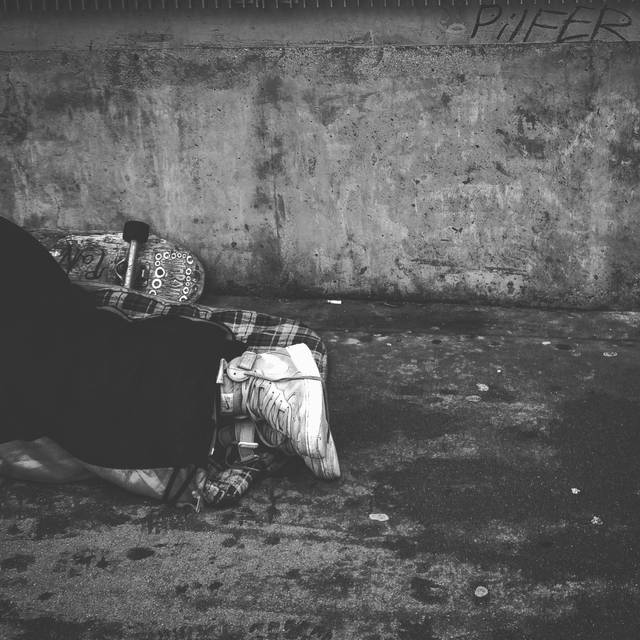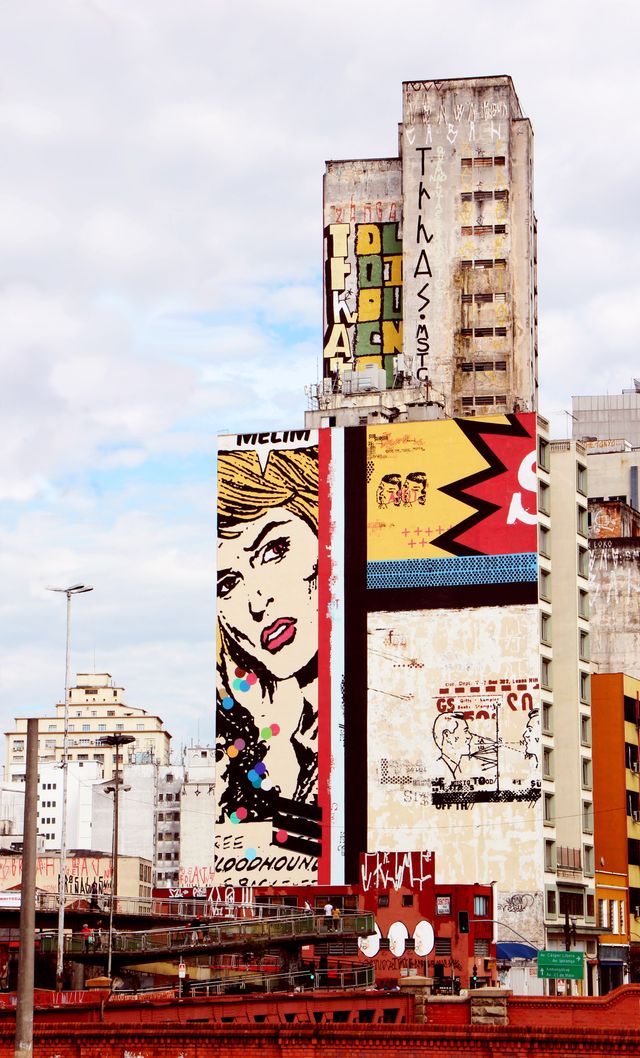
Alumni on the Move
Under The Bridge: The Invisible Lives Of Street Children
Moses Ogutu (Kenya & UCT, 2017) spent five of his teenage years living on the streets of Kenyan cities. Here he shares his journey and offers a window into the tremendous courage and resilience of street children across the globe.
“Please, Sir, have you got some change?” “Hi boss, can you buy me food?” No matter which major city you are in, this type of encounter is part of the cityscape. Millions of street children across the world are abandoned and left to fend for themselves. Exact numbers are difficult to quantify. According to an estimate by the Consortium of Street Children, in Africa there are over 150,000 street children in Ethiopia; 30,000 in Accra, Ghana; about 30,000 in Kinshasa, DRC; around a million in Egypt; and between 250,000 and 300,000 in Kenya. Similar numbers exist across Asian and Latin American countries.
Between 2002 and 2007, I was part of these statistics. At the age of 12, a combination of physical and psychological abuse and poor role modelling sent me way from home. I spent over five years as a street child in Nairobi and Mombasa, in Kenya. The problem is not limited to Africa or the so called developing world. In Europe, Canada and the USA, millions of children run away from home to live on the streets. Across the USA, the National Center on Family Homelessness (NCFH) reports that 1 in 45 children experience homelessness each year. The average age for a homeless child in the USA is nine. But there are kids younger than nine living with their homeless families.
Causal factors
Children seldom end up on the street due to one event. There are multiple causal factors — economic, social, psychological and political issues — which combine in a process of increasing vulnerability. The World Bank calls the upsurge in family stress leading to separation of children from their families the ‘spiral of vulnerability’. This spiral often interacts gradually with other push-and-pull factors. Vulnerable families lack the resilience to cope with additional shocks such as the death of a parent or loss of a job. Crises like this may force children to drop out of school and work to support the family; parents may also reduce their level of supervision. Difficulties at home encourage children to spend time in the streets during the day. Gradually they start sleeping in the streets, and as the connection with home breaks, some begin to make the streets their permanent base.
In many low- and middle-income economies, conflict, disasters and climate change create or exacerbate conditions caused by poverty and social exclusion. Rapid rural-urban migration results in large informal, unplanned settlements and slums. These aggravate children’s vulnerability due to the lack of basic safety and social services, such as schools. The risk of violence within their families may also drive children to the streets. I was often caught in the middle of conflict between my parents. My father thought I was keeping my mother’s secrets whenever they had conflict and she ran away. He would physically beat me to reveal information about her businesses. I resorted to leaving home and staying out in the local town for days before a neighbour would spot, ‘arrest’ and send me back. Eventually, my cousin sold me the idea of moving from the rural town to the capital city. This was bad role-modelling: being only twelve years old, I had no idea until he mentioned it. Additional forms of violence such as the corporal punishment prevalent in many African homes, schools and communities may drive children away. It takes a village to educate a child in Africa, and that education also involves discipline in the form of corporal punishment. Growing up in rural Kenya, when a neighbour or a stranger found me making a mistake, they had the right to ‘discipline’ me on behalf of my parents.
Other factors include cultural attitudes and behaviours. In societies that harbour beliefs about the existence of witches and black magic, for example Akwa Ibom and Cross River States in Nigeria, children accused of witchcraft are abandoned and end up on the streets. According to a 2010 UNICEF report, once accused of witchcraft, they are stigmatised and discriminated against for life. They are subjected to psychological and physical violence by family members, their circle of friends, church pastors and traditional healers, and are vulnerable to sexual violence. In 2010, the BBC quoted UNICEF’s Regional Child Protection officer for West and Central Africa who noted that more than 20,000 street children in Kinshasa had been accused of witchcraft.
Public perception: The wretched of the cities
“The worst sin towards our fellow creatures is not to hate them, but to be indifferent to them; that is the essence of inhumanity.” — The Devil’s Disciple by George Bernard Shaw
Viewed as wretched, street children and homeless people remain among the most invisible members of the world’s populations, often overlooked by governments, policymakers, and the society in general. They can be found sleeping on pavements, cardboard boxes or bare ground. They come together under bridges and trees, their belongings in plastic bags or broken retail trolleys, symbolising lives on the move. For example, in Cape Town, where the homeless number more than 7,000, the average day consists of waking up at around 5.30am, packing up and hiding their belongings, walking to areas where they would spend their day trying to make money, and then returning to their sleeping posts at around 4.30 pm.
Street children work as car-washers or parking attendants. They beg for money to buy food, and when there is none, they eat leftovers from restaurants and passers-by or scavenge from bins. Based on my own observations, most spend one to fifteen years, and in some cases even entire lives, on the streets. They abuse substances to find relief from the pressures of the street, to sleep easily and to endure pain, violence and hunger. In some cities, those with young babies are used by adults to solicit sympathy and obtain money by begging. In my early days in Mombasa, I begged money for an adult drug addict which he used to buy his drugs. While the majority lack education, some have basic education. They read books on the streets and are often interested in going back to school.
While some members of the public show compassion and empathy, others view street children as ‘dirty urchins’ who pollute the streets and disturb their peace. Complaints from the public often result in municipal laws that discriminate against or even harm street people. Their rights are continually violated, especially when international events come to town. Across major cities, from Buenos Aires to Cape Town, São Paulo to Monterey to Nairobi, law enforcement agencies carry out cleansing or displacement of street children and homeless people ahead of major events. African nations tend to want to please international delegates. In many African cities roadside stalls on which whole families rely for income are cleared when dignitaries come. Taps are left dry across informal settlements as water is piped to city fountains to please the visitors. Whenever there was an international event in Nairobi or Mombasa we were arrested, held in police cells and released only when the dignitaries had left.
In the run-up to the Rio Olympics in 2016, a UN Report in October 2015 accused the Brazilian police of killing street children to ‘clean the streets’ in what the vice chairperson of the UN Committee on the Rights of the Child, Renate Winter, described as an attempt to “present a problem-free city to the world”. This behaviour had been observed during the World Cup in 2014 in Brazil but remained largely unaddressed. Ironically, Brazil also hosted a side event, the Street World Cup for street children.

São Paulo, Brazil: A reminder of a global problem
In May 2015 I was visiting São Paulo to attend an international conference on development policy diffusion. I was approached by a young man while I was in a coffee shop at Guarulhos International airport. I could not read the Portuguese text on the paper he was holding, but I understood he was fundraising money for some programme or event. But from his clothes — dirty, oily a tattered shirt — I quickly concluded that he was a street child. I remembered how I used similar strategies, initially to dishonestly solicit money for a non-existent orphanage or church program, and later to genuinely raise funds for part of my high school fees.
To be greeted by a street child on my first trip outside Africa — and at the largest airport in Brazil — was a surprise. Seeing many more in the streets of São Paulo and Rio reminded me that the challenges facing our world are universal, especially in the Global South. Brazil has between 200,000 and 8 million street children spread across its cities. This compares with South Africa, where the economy has failed to grow, inequality is increasing and many people are becoming socially excluded. South Africa and Brazil have the highest inequality rates in the world. In the USA, the Department of Housing and Urban Development reported that 553,742 people were homeless on a single night in the US in 2017. Though there has been a decline in that number in most US American cities, the situation remains unprecedented in others, like Los Angeles and New York City, where more than 50,000 and 75,000 people respectively lack homes.
Lessons from life on the streets
People may assume, and often they do, that being a street child (or homeless person) is a non-existence, terrible and hopeless. But I learnt a lot from that life. Street life taught me important life skills: empathy, compassion, dealing with ambiguity, proactiveness, courage and most importantly respect for diversity. I interacted with children from regions and ethnicities across Kenya, sharing and telling stories. The bonds we created as a community made me realise that we might be of different nationalities and ethnicities, but our struggles are always the same. We were a diverse family living together as brothers and sisters, regardless of our ethnic or racial origins, supporting ourselves and sharing the little food we could get from the bins or begging. These experiences shaped my leadership vision and inspired an interest in diversity — through cultural awareness and cosmopolitanism — and my career. I travel to become more culturally aware and to champion respect for diversity. Growing up in orphanages (once I left the streets) also inspired a desire to work in environments and on projects that aim to contribute to reduction of the factors that render children and families homeless.
Interventions and potential solutions
The reasons why children end up on the streets are complex and, in some cases, specific, and require context-based and multi-sectoral approaches to address. Often the arrival of a child on the streets represents an active decision on the part of the child in response to serious rights violations at home. The combination of causal factors and the experience of growing up homeless means that these children grow up in traumatic conditions. They are more likely to suffer from chronic health problems and their emotional development may be delayed. With better support, children can leave the streets to accomplish extraordinary things.
Whether holding a bottle of glue, sleeping in a shack or eating from the bins, I always remained optimistic. In my own lived experience of transformation, and now working to address these issues, I find that successful interventions (including policy programming) often take an individual case management approach, taking into account the child’s perspective to finding alternatives to life in the streets. Research indicates that designed interventions will be effective if the community respects, protects and provides opportunities to street children and homeless families, rather than just trying to get rid of them.







